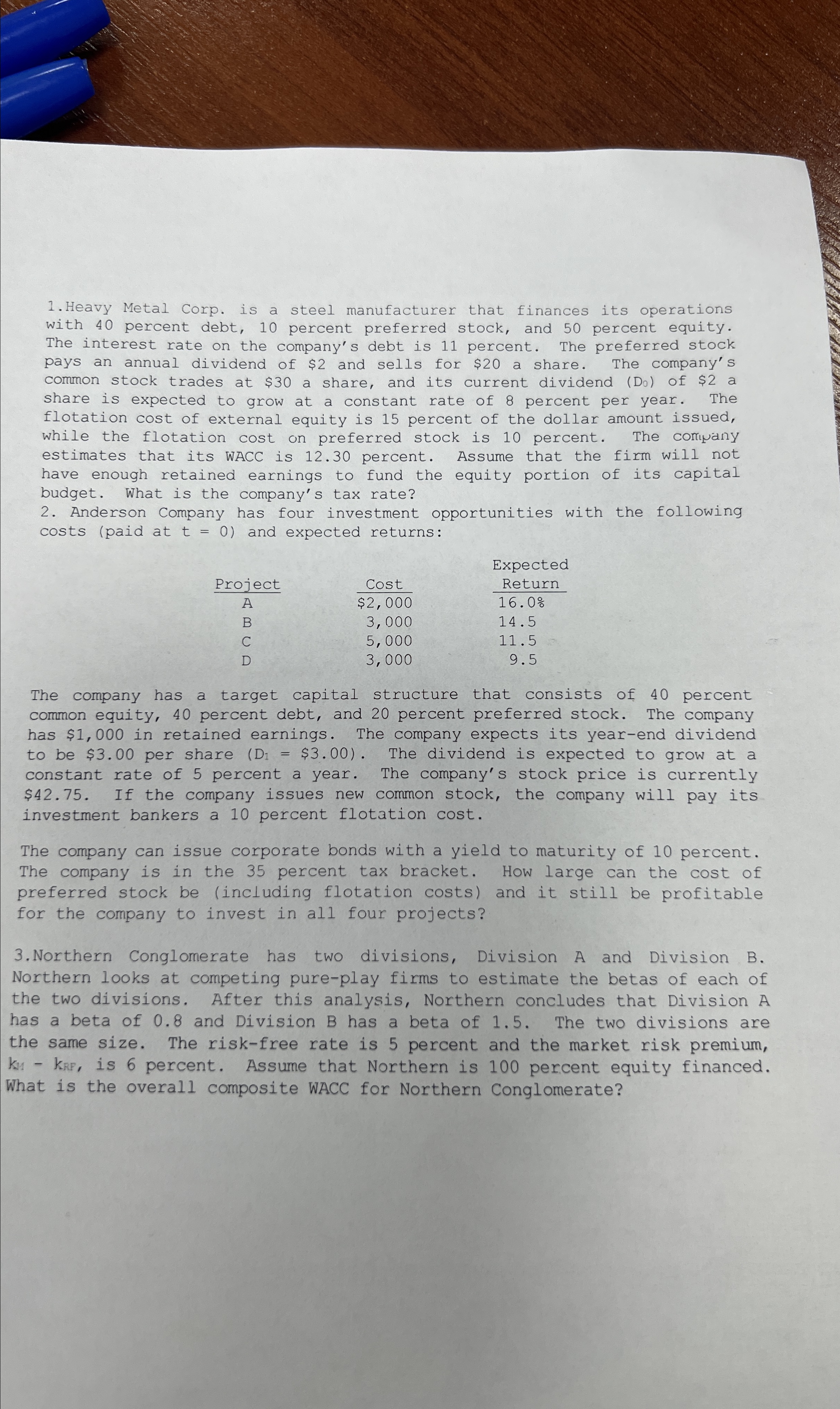Answered step by step
Verified Expert Solution
Question
1 Approved Answer
1. Heavy Metal Corp. is a steel manufacturer that finances its operations with 40 percent debt, 10 percent preferred stock, and 50 percent equity.

1. Heavy Metal Corp. is a steel manufacturer that finances its operations with 40 percent debt, 10 percent preferred stock, and 50 percent equity. The interest rate on the company's debt is 11 percent. The preferred stock pays an annual dividend of $2 and sells for $20 a share. The company's common stock trades at $30 a share, and its current dividend (Do) of $2 a share is expected to grow at a constant rate of 8 percent per year. The flotation cost of external equity is 15 percent of the dollar amount issued, while the flotation cost on preferred stock is 10 percent. The company estimates that its WACC is 12.30 percent. Assume that the firm will not have enough retained earnings to fund the equity portion of its capital budget. What is the company's tax rate? 2. Anderson Company has four investment opportunities with the following costs (paid at t = 0) and expected returns: Project ABCD Expected Cost Return $2,000 16.0% 3,000 14.5 5,000 3,000 11.5 9.5 The company has a target capital structure that consists of 40 percent common equity, 40 percent debt, and 20 percent preferred stock. The company has $1,000 in retained earnings. The company expects its year-end dividend to be $3.00 per share (D = $3.00). The dividend is expected to grow at a constant rate of 5 percent a year. The company's stock price is currently $42.75. If the company issues new common stock, the company will pay its investment bankers a 10 percent flotation cost. The company can issue corporate bonds with a yield to maturity of 10 percent. The company is in the 35 percent tax bracket. How large can the cost of preferred stock be (including flotation costs) and it still be profitable for the company to invest in all four projects? 3. Northern Conglomerate has two divisions, Division A and Division B. Northern looks at competing pure-play firms to estimate the betas of each of the two divisions. After this analysis, Northern concludes that Division A has a beta of 0.8 and Division B has a beta of 1.5. The two divisions are the same size. The risk-free rate is 5 percent and the market risk premium, ku - KRP, is 6 percent. Assume that Northern is 100 percent equity financed. What is the overall composite WACC for Northern Conglomerate?
Step by Step Solution
There are 3 Steps involved in it
Step: 1

Get Instant Access to Expert-Tailored Solutions
See step-by-step solutions with expert insights and AI powered tools for academic success
Step: 2

Step: 3

Ace Your Homework with AI
Get the answers you need in no time with our AI-driven, step-by-step assistance
Get Started


